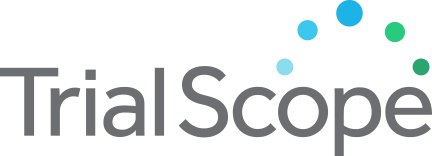Mechanism of Action of Interferon in the Treatment of Myeloproliferative Neoplasms
Study Purpose
Classical BCR-ABL-negative myeloproliferative neoplasms (MPN) include: Polycythemia Vera (PV), Essential Thrombocythemia (ET) and Primary Myelofibrosis (PMF). They are myeloid malignancies resulting from the transformation of a multipotent hematopoietic stem cell (HSC) caused by mutations activating the JAK2/STAT pathway. The most prevalent mutation is JAK2V617F. Type 1 and Type 2 calreticulin (CALR) and thrombopoietin receptor (MPL) mutations are also observed in ET and PMF. Additional non-MPN mutations affecting different pathways are also found, particularly in PMF, and are involved in disease initiation and/or in phenotypic changes and /or disease progression and/or response to therapy. There is an obvious and urgent need for an efficient therapy for MPN. In particular, PMF remain without curative treatment, except allogeneic HSC transplantation and JAK inhibitors have limited effects on the disease outcome. Among novel therapeutic approaches, Peg-IFNα2a (IFN) is the most efficient harboring both high rates of hematological responses in JAK2V617F and CALRmut MPN patients and some molecular responses mainly in JAK2V617F patients including deep molecular response (DMR). Nevertheless, several studies, including our own, have demonstrated that the IFN molecular response in CALRmut patients is heterogeneous and overall much lower than in JAK2V617F patients. Moreover, some JAK2V617F MPN patients do not respond to IFN, and DMR is only observed in around 20% of JAK2V617F patients. Finally, long-term treatments are needed (2-5 years) to obtain a DMR, jeopardizing its success due to possible long-term toxicity. The underlying reasons for failure, drug resistance, heterogeneous molecular response in CALRmut patients and the long delays for DMR in JAK2V617F patients remain unclear, largely because the mechanisms by which IFNα targets MPN malignant clones remain elusive. Significant improvement of IFN efficacy cannot be achieved without basic and clinical research. Hence our two lines of research are to.
- - Understand how IFNα specifically targets neoplastic HSCs.
Recruitment Criteria
|
Accepts Healthy Volunteers
Healthy volunteers are participants who do not have a disease or condition, or related conditions or symptoms |
No |
|
Study Type
An interventional clinical study is where participants are assigned to receive one or more interventions (or no intervention) so that researchers can evaluate the effects of the interventions on biomedical or health-related outcomes. An observational clinical study is where participants identified as belonging to study groups are assessed for biomedical or health outcomes. Searching Both is inclusive of interventional and observational studies. |
Observational |
| Eligible Ages | 18 Years and Over |
| Gender | All |
Trial Details
|
Trial ID:
This trial id was obtained from ClinicalTrials.gov, a service of the U.S. National Institutes of Health, providing information on publicly and privately supported clinical studies of human participants with locations in all 50 States and in 196 countries. |
NCT05850273 |
|
Phase
Phase 1: Studies that emphasize safety and how the drug is metabolized and excreted in humans. Phase 2: Studies that gather preliminary data on effectiveness (whether the drug works in people who have a certain disease or condition) and additional safety data. Phase 3: Studies that gather more information about safety and effectiveness by studying different populations and different dosages and by using the drug in combination with other drugs. Phase 4: Studies occurring after FDA has approved a drug for marketing, efficacy, or optimal use. |
|
|
Lead Sponsor
The sponsor is the organization or person who oversees the clinical study and is responsible for analyzing the study data. |
Institut National de la Santé Et de la Recherche Médicale, France |
|
Principal Investigator
The person who is responsible for the scientific and technical direction of the entire clinical study. |
Florence Pasquier, MD,PhD |
| Principal Investigator Affiliation | [email protected] |
|
Agency Class
Category of organization(s) involved as sponsor (and collaborator) supporting the trial. |
Other |
| Overall Status | Recruiting |
| Countries | France |
|
Conditions
The disease, disorder, syndrome, illness, or injury that is being studied. |
Myeloproliferative Neoplasm |
Contact a Trial Team
If you are interested in learning more about this trial, find the trial site nearest to your location and contact the site coordinator via email or phone. We also strongly recommend that you consult with your healthcare provider about the trials that may interest you and refer to our terms of service below.
International Sites
Site by: Kaleidoscopic

